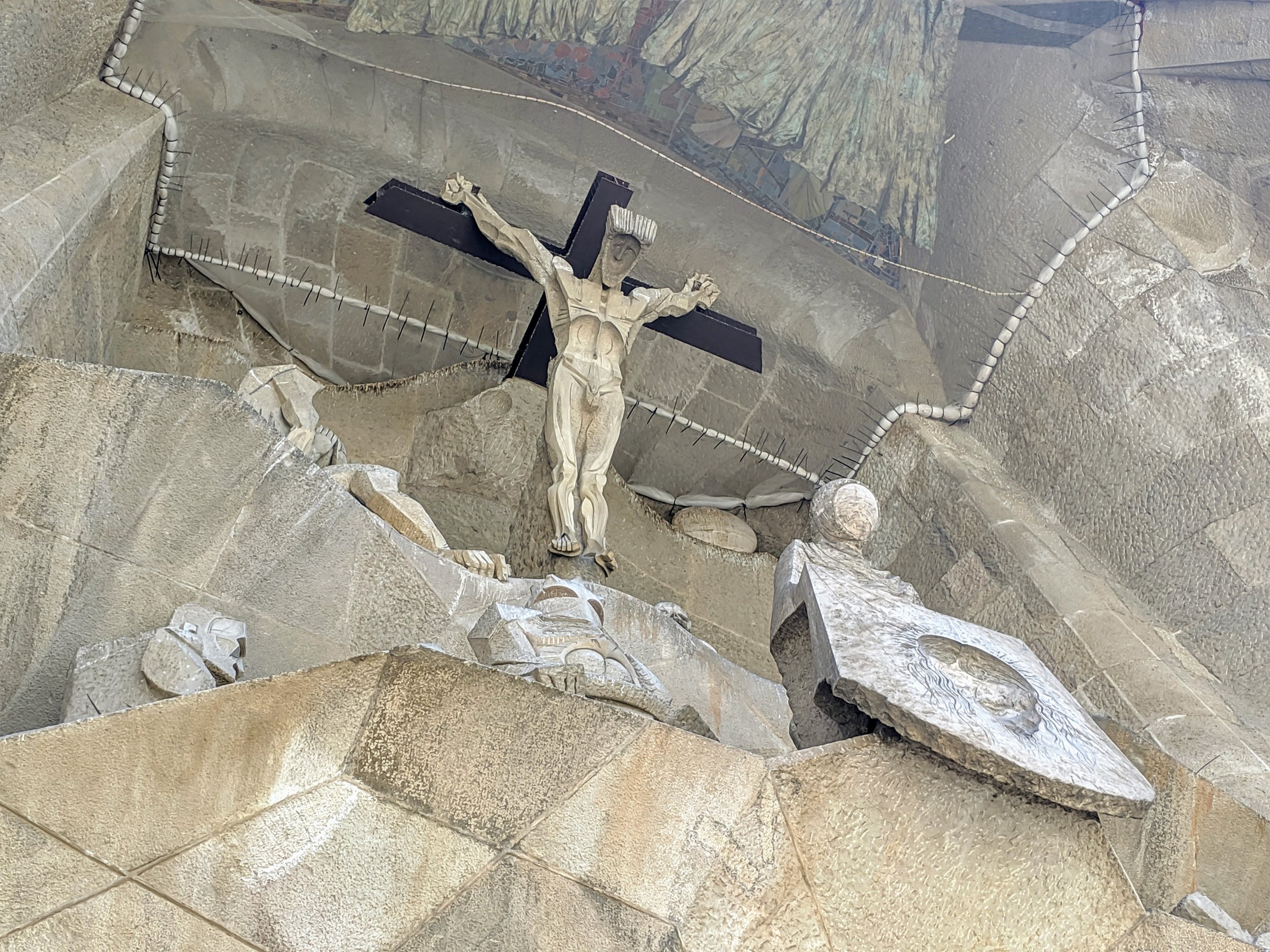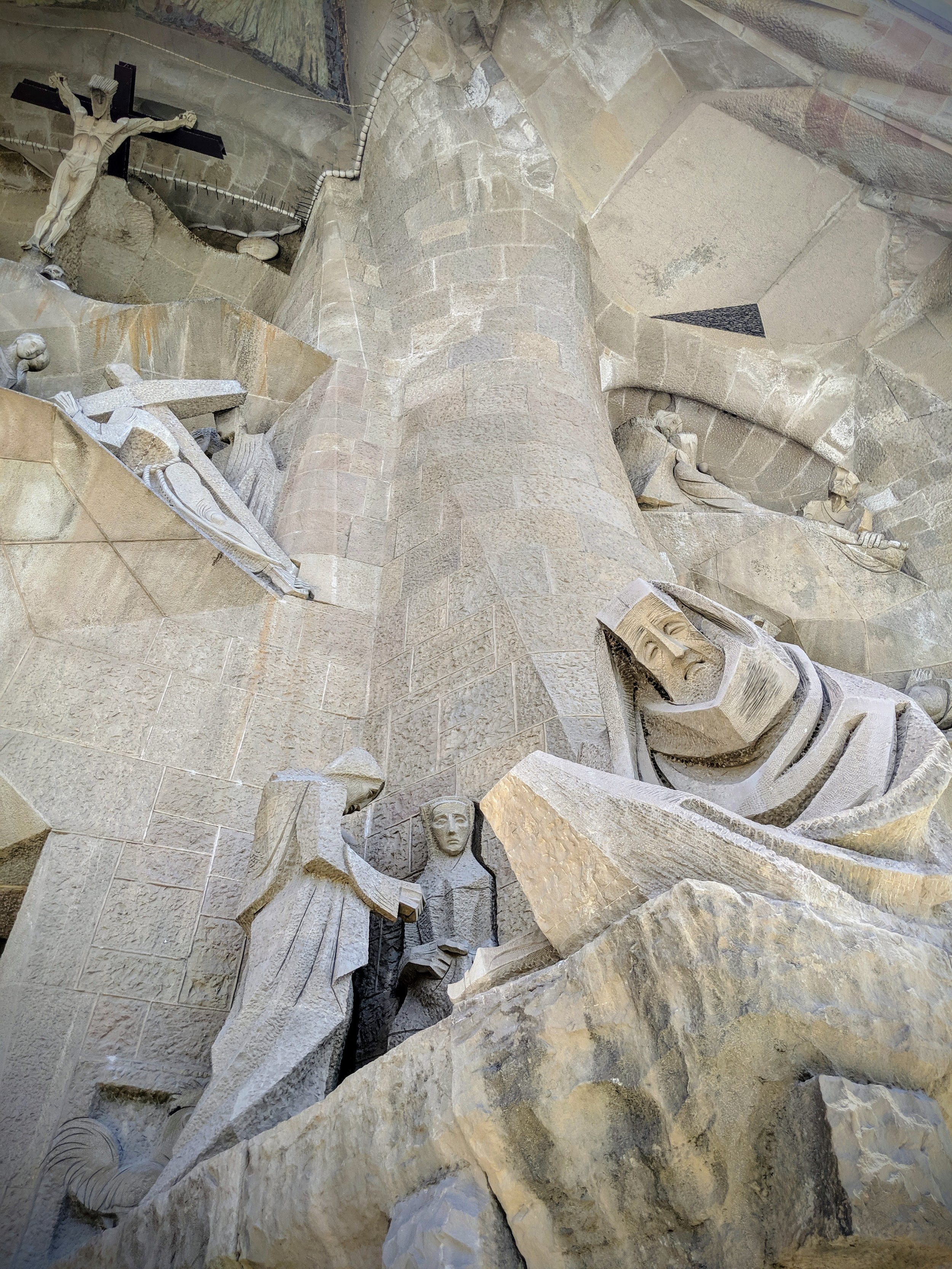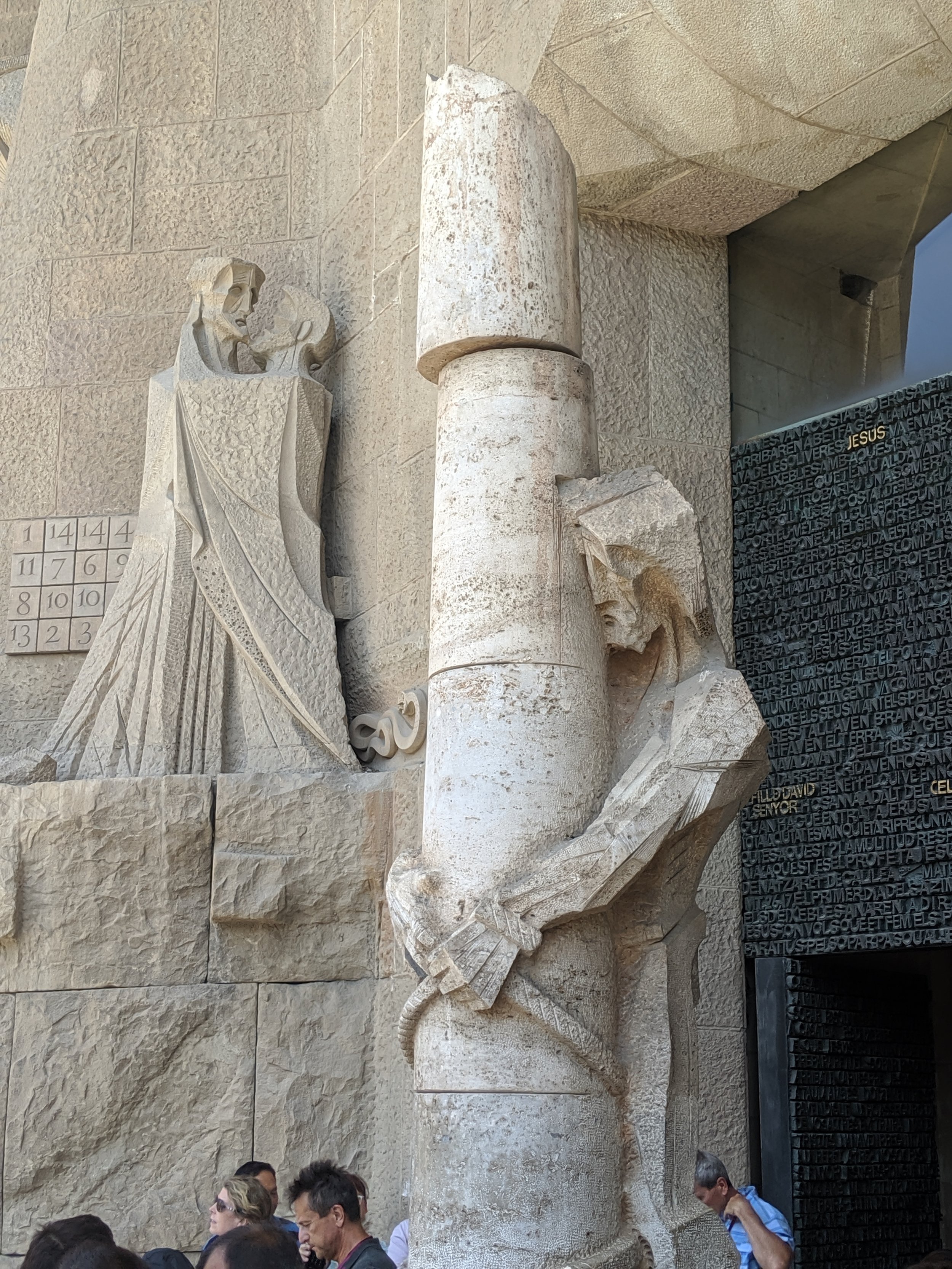Why You Definitely Need to Visit the Sagrada Familia
Disclosure: Please note that some of the links below may be affiliate links, and at no additional cost to you, I earn a commission if you make a purchase. I recommend only products and companies I use and the income goes to keeping the site community supported.
It Might Be the Most Beautiful Church in the World!
Barcelona, Spain is a tourist hotspot, no doubt about it. Between local battles with AirBnB and debates at the international level, it is clear that many are concerned about the future of over-tourism in Barcelona.
There are many articles out there which recommend skipping Barcelona because of over-tourism, and instead seek lesser-known spots.
Well… you can’t.
You can’t skip Barcelona if you like religious architecture, because the best modern church - in my opinion, one of the finest churches in all the world - is in Barcelona. The Sagrada Familia, Antonio Gaudi’s still unfinished masterpiece of Barcelona glory, is an absolute Bucket List item you will not want to miss.
This quick guide will tell you everything you need to know to experience the Sagrada Familia, and not just see it.
Dr. C's Tips for Visiting
Tickets, even in the low season, must be bought online beforehand, especially for climbing the towers. You need to do this a few days in advance; in high season, if you are on a tight schedule and need a specific time, book weeks in advance. This is non-negotiable.
I highly recommend the audio guide; it is worth the expense to learn more about the construction and also to get the musical accompaniment to set the scene.
Entrance times are in 15 minute intervals, but once you enter, you can move at your own pace.
It took me three-and-a half hours to tour, but I had some spiritually moving moments that slowed me down. I would budget a minimum of an hour, however, just to handle crowds and make your way through the museum.
Make sure you visit the museum underneath after you’ve gone through but before you exit - it is excellent. Also, bathrooms are down there.
There are some excellent gift shops down beneath that are great for Gaudi materials.
There is a fantastic ice cream shop just around from the exit of the cathedral (next to the McDonalds) called Arlequino Gelato. Their chocolate and orange Pim's flavor is worth a stop.
Gaudi, Nature, and Spirituality
The Sagrada Familia is the masterpiece of Barcelona’s own architectural genius: the 19th century Antonio Gaudi. Gaudi, whose eclectic style was popular among Barcelona’s growing aristocracy during its Golden Age, was an architect and interior designer who drew his inspiration from nature.
Gaudi studied botany, zoology, and theology, seeing beauty in the patterns of trees, shells, honeycombs, fruits, and other natural forms. He incorporated these into his decorative elements, as well as into the mathematics he used to create his architectural forms. His famous houses, churches, parks, and apartments all have a similar visual style.
The diocese of Barcelona hired Gaudi to build a gothic cathedral for the city; upon taking the job, Gaudi redesigned the interior, exterior, and overarching theme. Construction began in 1886. Gaudi worked on it the last 40 years of his life, dying in 1926. Construction has continued and will finish in 2026.
That’s right - it’s not done yet. The people of Barcelona are seeing the vision to completion!
There will be a total of 18 towers: 12 towers dedicated to the apostles, four for the Evangelists, one big tower for Mary (Gaudi's favorite religious figure), and the tallest reserved for Christ. Eight are currently completed; the towers are the main features left to be constructed by 2026.
The tower of Christ will be 170m tall, making the Sagrada Familia the tallest church in the world. That tower will be 1m shorter than the nearby Montjuïc hill in Barcelona - Gaudi's extreme devotion, love, and study of nature and religion led him to say it shouldn't be taller because "the work of man should never surpass that of God."
If you want to learn more about Gaudi’s life, his work, and his connections between nature and spirituality, spend some time in the museum underneath the Sagrada Familia (after you tour the church, included as part of your ticket).
Architecture Evoking Emotion
The exterior of the Sagrada Familia is meant to evoke powerful emotions through decorative and architectural elements, and it’s impressive. The outside is a sandy beige, though there are decorative elements at the top with Gaudi’s trademarked mosaic tiling.
The Sagrada Familia's exterior is decorated with ornate statues (in contrast to the interior) that occupy two major facades (which will serve as your entrance and exit now until the actual front entrance is completed in a decade). The two facades depict Jesus' life in an evocative fashion to control the mood of the viewer.
The Nativity Facade
The Nativity facade is busy, filled with an overabundance of detail (this is where the entrance is to show your tickets). This was the only part completed before Gaudi's death.
The Nativity Facade features numerous statues showing Jesus' birth, the Three Wise Men, the flight to Egypt, etc. All are done in life-like detail, and there is a lot of plant life interspersed.
This side faces the East, catching the morning sun. The symbolism of the morning and the flowers sets the mood for the scenes. You feel soothed, and brought in tune with nature, before entering the cathedral.
The Passion Facade
In contrast, as you exit, the Passion facade is about PAIN.
Scenes from Christ's death are depicted in stark, blockish Cubist forms, full of sharp angles and pained expressions. Judas kisses the Christ, he is whipped on the pillar, carries the cross, and is eventually crucified. Mary and others weep. The torment is obvious. Gaudi always evokes emotions through form, in powerful ways.
There's even a magic square in which all rows/columns, etc add up to 33, Jesus' age at death - showing the connection between mathematics and the divine that fueled Gaudi's approach to architecture.
You can see the pillars which hold up the facade. Seem familiar in a visceral way? Gaudi designed them to look like stretched, strained tendons, evoking the agony of the Passion. The frontal piece above, visible in the last photo, is made to look like a rib cage, reminding us of Christ's body suffering on the cross.
The contrast with the Nativity facade on the other side could not be more abrupt. This church tells story through form, evokes emotions, and subconsciously speaks through architecture. Such is the undeniable genius of Gaudi.
Color, Light, and Sound
The cathedral between these two facades inside is neo-Gothic, sporting massive stained glass windows. The Eastern (Nativity) side is done in blues and green to catch the cool morning light. The Western (Passion) side is fiery reds and oranges to burn off the sunset light. The glass includes the names of famous saints and pilgrimage sites.
Honestly, the rainbow effect inside was so beautiful when I walked in that I cried.
The columns are made of three different types of stone (porphyry, granite, and sandstone) depending on how heavy the towers they will support will be. Gaudi designed them to imitate trees, so they open up into a canopy. In addition to creating the illusion of a forest inside, the shape allows weight to be distributed, so there are no flying buttresses.
At the tops of the pillars are medallions of the four Evangelists, as well as the four regions of Catalan. This is a religious monument and a monument to the Catalonian people who have supported its construction for over 100 years.
There are only 4 statues in the whole colossal interior: Joseph, Mary, St. George (patron saint of Catalonia), and the crucifix. Jesus hangs beneath a parasol, with 50 lights to represent the Pentecost.
The entire church is built with holes in strange places, creating sound passages to amplify music. The cathedral thus acts as one massive musical instrument. Ultimately, Gaudi wanted to create a complete sensory experience, playing with your emotions through symbolism, sound, light, color, and space.
Being a Part of History
And finally, one of the main reasons why you need to visit the Sagrada Familia at some point soon is that, as human beings, we sometimes forget about the tiny scope of our lives within the course of human history. We get caught up in our own crises and joys, and lose the humility to look at our place in the larger scheme of things.
The Sagrada Familia is an epic works project that spans more than a lifetime (or two). In earlier historical eras, it was not unusual for cathedrals, pyramids, palaces, and more to take multiple lifetimes or centuries to build. We accept that as so common, we don’t think about the people that existed in those construction spans.
The Sagrada Familia is that epic work of our lifetimes. In the audio guide at the Sagrada Familia, the narrator reminds us that our ticket price contributes to the construction making us, the visitors, a part of the story. We exist as part of the 140 years that future generations will say it took to build the Sagrada Familia.
As such, visiting the Sagrada Familia is a spiritually moving experience in a number of ways: religious, for Christian visitors; creative, for the artists impressed by Gaudi’s skills; fantastically, for those moved by the magic of the colors. But it’s also an opportunity to reflect on our own individual place in this epic building project, and the city, and history.
Dr. C’s Final Thoughts
It’s rare that a tourist gets to feel like a part of the narrative of a sight she visits. Thus, while Barcelona may feel overpacked and over-touristed, and locals may be rightly annoyed, it’s clear why it’s happening: Barcelona offers you, through the Sagrada Familia, an opportunity to be a part of a movement in history.
How can you choose not to be? Go to the Sagrada Familia: a stunningly beautiful church that brought me to tears and tied me to a city I will forever love.








































